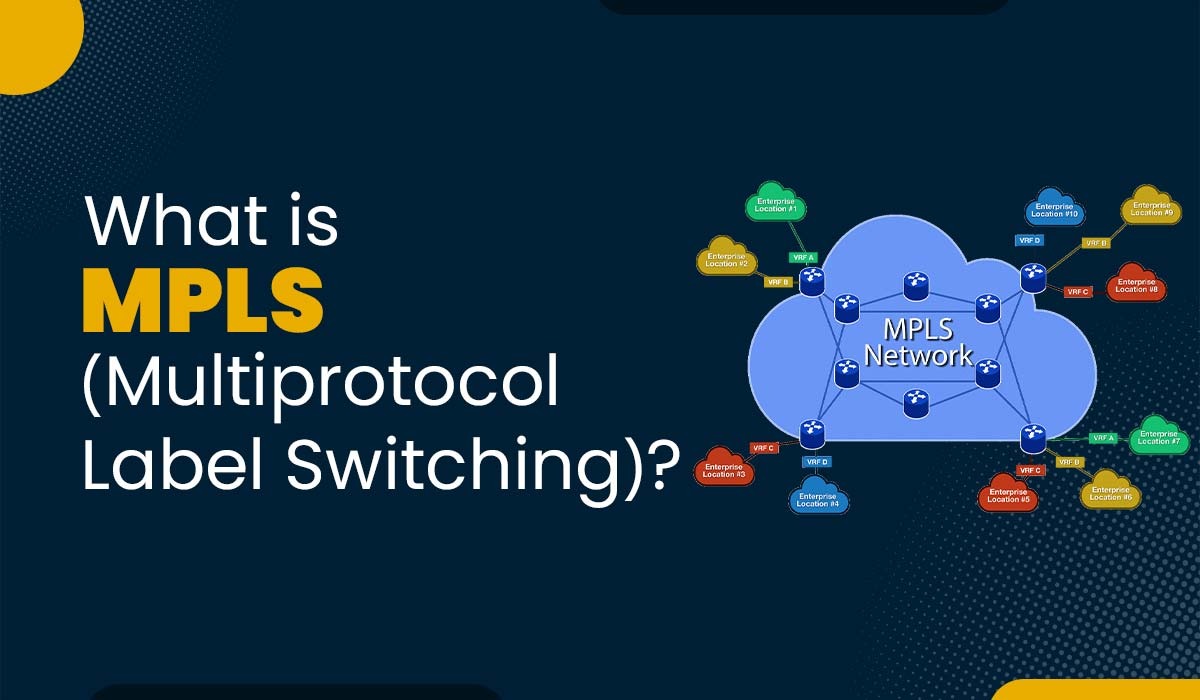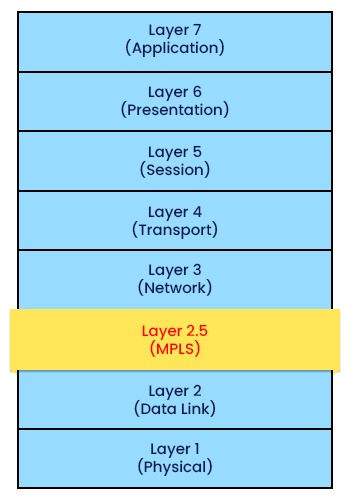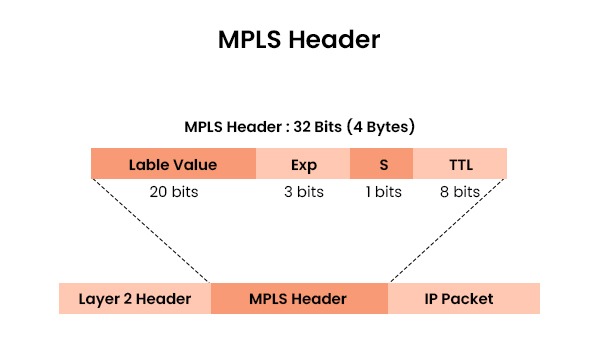What is MPLS (Multiprotocol Label Switching)?

Multiprotocol Label Switching is a technology that allows efficient data transmission across networks. Network operators and service providers widely employ it to ensure high quality as well as reliable services for their customers. By understanding the working principles of MPLS, one can proficiently design, configure, troubleshoot, and optimize these networks. In this blog post, we will focus on MPLS by explaining its fundamentals, how it operates, when it is utilized, and how it compares to technologies like SD-WAN. Let’s first understand what it is without wasting any more time. MPLS stands for Multiprotocol Label Switching—a routing technique that emerged in the 1990s. It makes use of labels to direct data packets from one network node to another. Unlike IP routing methods that rely on network addresses to determine destinations, it utilizes labels to identify pre-established paths between endpoints. This approach enables efficient and more secure data delivery compared to IP routing. Now that we have a basic understanding of it, let’s discuss when it is needed. MPLS is used in various applications where high performance, reliability, and data security are crucial aspects of transmission requirements. Here are a few examples of the applications: Voice over IP (VoIP): It guarantees the quality of service (QoS) for voice traffic, ensuring latency, jitter, and packet loss. Private networks (VPNs): It enables the creation of secure and private connections between various locations through encryption and tunneling techniques. Being a hybrid protocol that functions across these two levels, it is neither technically layer 2 nor layer 3 in the traditional sense. Layer 2 technologies like Ethernet, Frame Relay, and ATM may all have their packets encapsulated by MPLS, which then forwards them based on labels that don’t depend on layer 3 addresses like IP or IPv6. MPLS, however, also uses layer 3 protocols, such as IP or BGP, to create pathways and distribute labels across endpoints. As a result, it is a layer 2.5 that connects layers 2 and 3. Let’s understand how it works. To understand the functioning of MPLS, we must draw a comparison with the Internet routing process. When data is transmitted over the Internet, it is divided into units known as packets. Each packet carries a header that holds information regarding its origin and destination. Within this header lies the destination IP address, which serves as an address for the intended recipient device. These packets traverse through a series of routers, acting as network intermediaries. Upon receiving a packet, each router looks at the packet’s header, consults its routing table, and determines where to forward it. The routing table contains information regarding pathways to various networks based on factors like distance, congestion, and costs. It’s worth noting that these routing tables can change, depending totally on the network conditions and traffic patterns. Nonetheless, this traditional routing does have limitations. These are: MPLS addresses these challenges by taking a different approach to routing. It makes use of labels in order to identify paths. A label is a short identifier attached to each packet of the first router in an MPLS network (known as an ingress router). This label instructs routers in the network on how to forward the packet along a predefined path called a label-switched path (LSP). The last router in the network, called the egress router, removes the label and delivers the packet to its final destination. The advantage of using labels is their simplicity and speed compared to IP addresses. Routers within an MPLS network don’t have to consult their routing tables for each packet; they need to swap the label with a new one corresponding to the next hop in the path. This reduces routing and minimizes latency. It also ensures that all packets follow the same route. The assignment and distribution of labels occurs through a protocol called Label Distribution Protocol (LDP), which operates among routers within an MPLS network. LDP creates LSPs by utilizing data from the IP routing protocols, like OSPF or BGP. Additionally, LDP keeps track of the status of these LSPs. It further updates whenever there are alterations in the network topology or traffic requirements. Most of the time, everyone gets confused with MPLs and SD-WAN. Below, we have explained the basic benefits each can provide for better outcomes. When we talk about MPLS, it’s a proven technology that offers various benefits such as high performance, reliability, and security for network traffic. Apart from that, it also has low latency and jitter that makes it a crucial choice for VoIP. Like every other technology, it also has some limitations, such as being quite expensive and complex to deploy as well as to manage. On the other hand, SD-WAN is a newer technology as compared to it. It also has benefits such as offering flexibility, scalability, and cost-efficiency for network traffic. It can also be utilized to dynamically route traffic over multiple links from different sources. In the end, the choice between it and SD-WAN totally depends on the needs as well as the preferences of each organization. MPLS is one the common methods to construct the connections between various LANs and that further makes WAN. The three types of MPLS are: Layer 2 VPN, Layer 3 VPN, and Layer 2 Circuits. MPLS can be used for applications that require immediate data delivery for the purpose of voice or video calls. MPLS is still used because it offers fast and reliable data transmission, supports multiple protocols and services, and enables efficient network management and scalability. MPLS is one of the powerful technologies that assist in the fast and efficient transmission of data over a network. In this blog, we have covered MPLS in detail, along with its use, how it works, and a detailed comparison between SD-WAN.Introduction
What is MPLS?
When is MPLS used?
Is MPLS Layer 2 or Layer 3?

How Does Multiprotocol Label Switching Work?

MPLS vs SD-WAN
Frequently Asked Questions
Q1. Is MPLS a LAN or a WAN?
Q2. What are the three types of MPLS?
Q3. What is an example of MPLS?
Q4. Why is MPLS still used?
Conclusion







